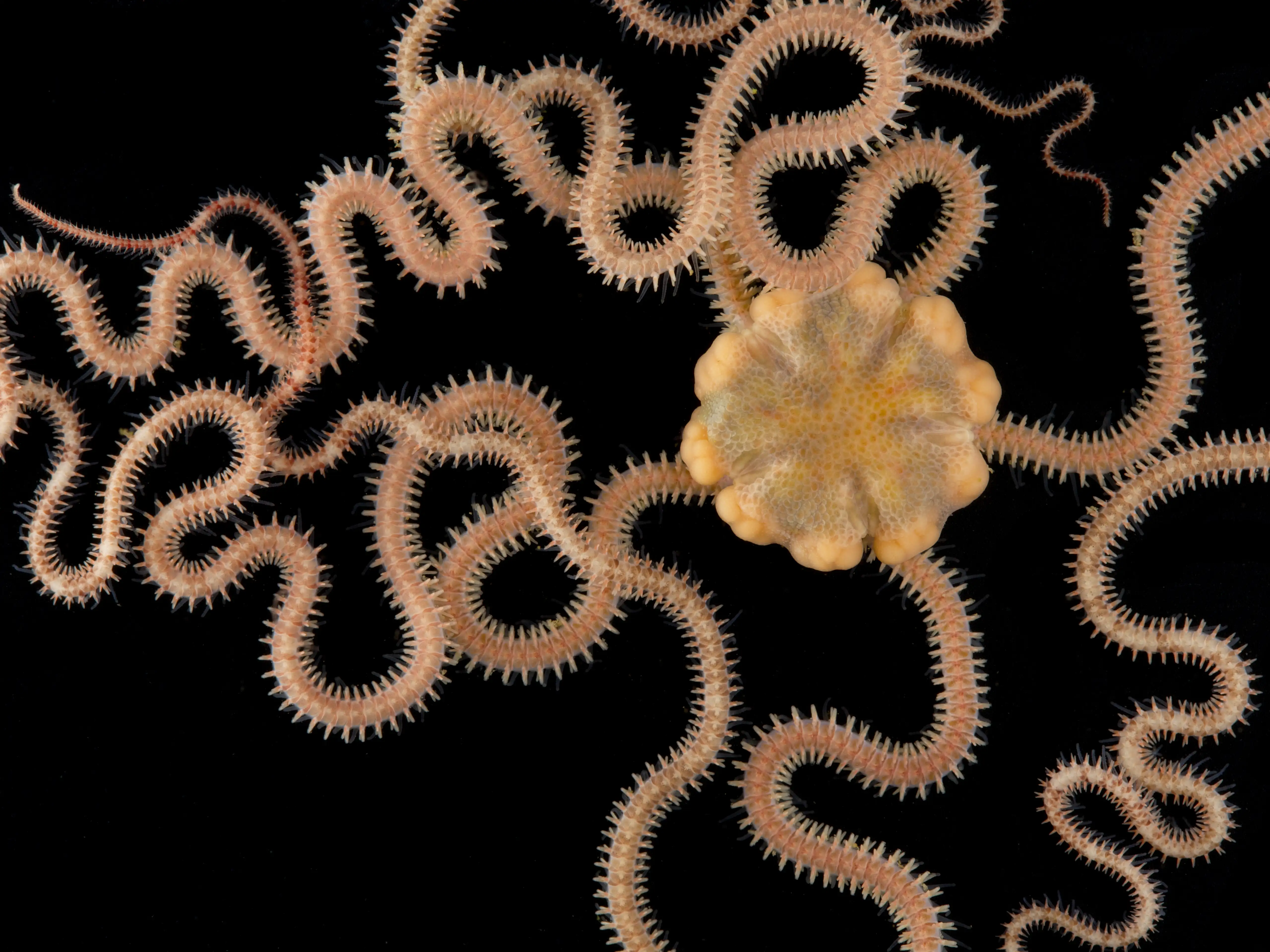
Amphiura filiformis by Fredrik Pleijel, used with permission
Help
This map shows observations of the species Amphiura filiformis from the year 2000 onwards.
The blue markers indicate the frequency of the observations, with darker blue regions indicating more observations in that area.
All observations were obtained from Global Biodiversity Information Facility (GBIF)
.
You can visit
the GBIF page on the species Amphiura filiformis by clicking here.
Taxonomy
Description
Amphiura filiformis is a burrowing brittlestar with a disc up to 10 mm in diameter with long arms (10 x their disc diameter on average) that extend into the water column for suspension feeding, making it an ecosystem engineer and important food item for flatfish, cod and crayfish. It is the dominant species on many sublittoral soft bottoms down to 200 m depth in the North Sea and the Mediterranean. A. filiformis has separate sexes and reproduce annually during the summer months (July-September). Adults are at least 3 years old before they are mature and have a life span of 10-20 years. Their larvae are planktotrophic and metamorphose a month later under culture conditions. Both larvae and adults can be cultured.
Amphiura filiformis has exceptional adult regenerative abilities and can regenerate fully functional arms in a matter of weeks, making this species an emerging model for regeneration and stem cell biology in biomedical research. Major scientific targets include cellular and molecular mechanisms underlying regeneration with important links to neuroscience, stem cell biology and neuropeptide structure and function in the absence of a centralised nervous system.
Echinoderms such as Amphiura filiformis have the potential to offer viable and tractable models for molecular and cellular research on stem cells and regeneration, aided by the fact that echinoderms are characterised by a simple genomic structure. Genetic information between this species is highly conserved, compared to humans, but the nature of the common molecular regulatory pathways that facilitate regeneration has been unclear until now.
How to cite
If you use the data presented in the genome portal from this species in your research, please cite the original publication:
Parey, E., Ortega-Martinez, O., Delroisse, J., Piovani, L., Czarkwiani, A., Dylus, D., Arya, S., Dupont, S., Thorndyke, M., Larsson, T., Johannesson, K., Buckley, K. M., Martinez, P., Oliveri, P., & Marlétaz, F. (2024). The brittle star genome illuminates the genetic basis of animal appendage regeneration. Nature Ecology & Evolution, 8(8), 1505–1521. https://doi.org/10.1038/s41559-024-02456-yIf you have used the pages for this species in the Genome Portal, please refer to it in-text as: “The Amphiura filiformis entry in the Swedish Reference Genome Portal (Retrieved ).” and use the following for the bibliography:
Swedish Reference Genome Portal (Retrieved ), SciLifeLab Data Centre, version 1.5.3 from https://genomes.scilifelab.se, RRID:SCR_026008References
Parey, E., Ortega-Martinez, O., Delroisse, J., Piovani, L., Czarkwiani, A., Dylus, D., Arya, S., Dupont, S., Thorndyke, M., Larsson, T., Johannesson, K., Buckley, K. M., Martinez, P., Oliveri, P., & Marlétaz, F. (2024). The brittle star genome illuminates the genetic basis of animal appendage regeneration. Nature Ecology & Evolution, 8(8), 1505–1521. https://doi.org/10.1038/s41559-024-02456-y
Changelog
- 23/01/2025 - Species first published on the Portal
Page last updated: 23/01/2025
